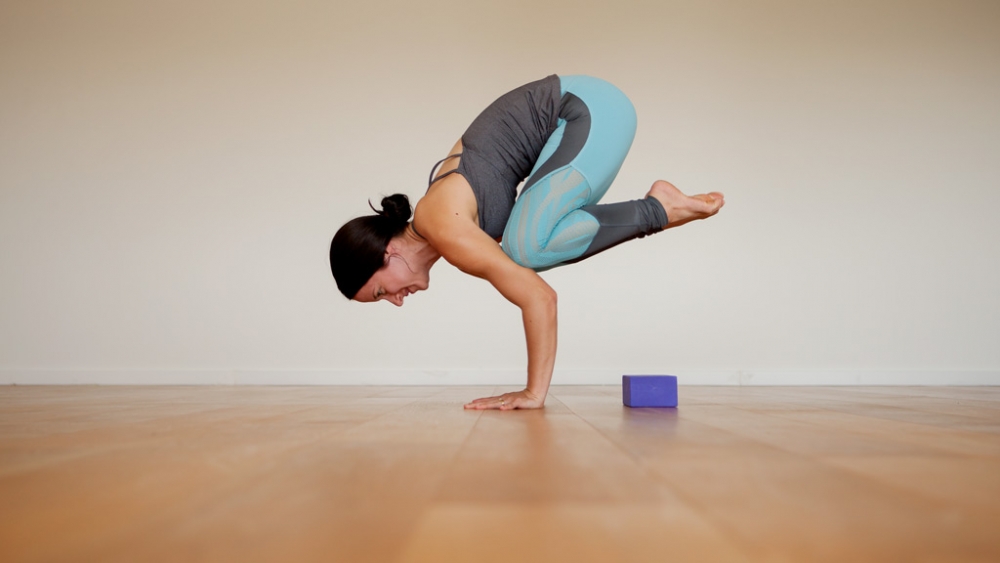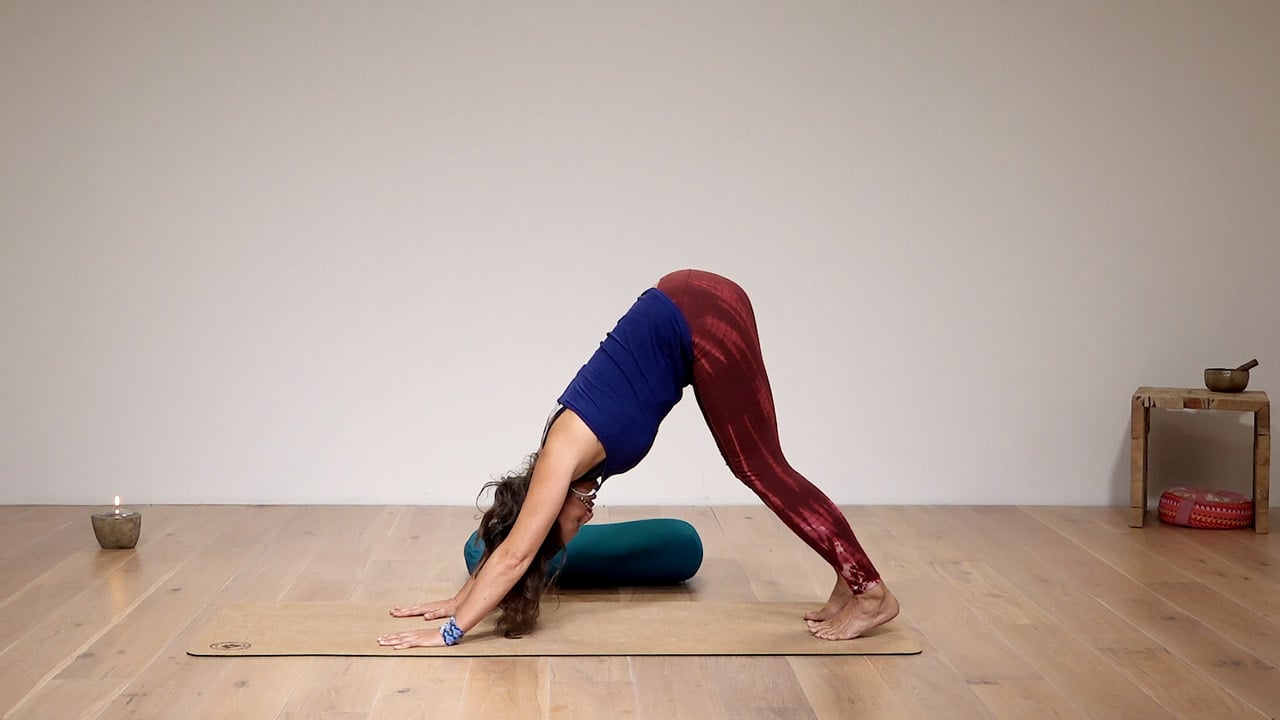What are bandhas?
You know those little combinations locks you get when travelling, to keep the contents of your luggage safe and secure? Well, your body has similar locks, called bandhas. ‘Bandha’ literally means lock, to tighten, to close-off and block. There are four main bandhas in the body:
- Mula Bandha – the root lock
- Jalandhara Bandha – the throat lock
- Uddiyana Bandha – lifting of the diaphragm lock
- Maha Bandha – all three locks at the same time
Why are they useful?
What is the point and purpose of closing off the throat, contracting and lifting the abdomen and of drawing inward at the centre of the pelvic floor? Both separately, and all at once?
Essentially, we engage the bandhas to ‘lock’ the energy – prana, or life force – in, or direct this energy to particular parts of our body.
The root (Mula) and throat (Jalandhara) bandhas’ function is to seal the upper and lower end of the spinal column. Jalandhara bandha temporarily prevents prana from moving up, while Mula bandha blocks the downward movement of energy and pulls it back towards the navel region. When we engage both at the same time, it’s like two sticks being rubbed together – with the application of the stomach lock as well, magnifying it to produce the fire of heat.
Bandhas are often first learned and engaged during practices of kriya and pranayama and once mastered can be used in asana practice as well. Bear in mind, it may take some practice until you’re able to engage them to the most refined degree.
While we can perform Mula and Jalandhara bandhas after both inhalation and exhalation, we only engage Uddihyana and Maha bandha in Bahya Kumbhka – or external retention.
Benefits of engaging these energy locks
So why is this locking up so beneficial, when yoga is apparently all about opening?
Well, bandhas are extremely fruitful for the brain centres, the nadis (channels through which prana streams) and the chakras (energy centres). They purify, remove blockages and harmonise and balance the self.
Bandhas temporarily halt the flowing of blood, so when released there is an increased flow of fresh blood. This flushes away the old, dead cells and activates the organs to strengthen, renew and rejuvenate as circulation is bolstered.
Engaging the bandhas also teaches and strengthens single point concentration, a steady and controlled breath and a clear, calm mind. It helps to regulate your internal systems, from sexual to hormonal to metabolic and digestive.
It’s advisable not to engage Mula bandha during menstruation (the first two to three days) or when applying Ashwini mudra (a kriya exercise where the anus is clenched and unclenched).
To lock or unlock – that is the question
Let’s explore simple techniques to get in touch with the Bandhas or centres of energy within our body. We break down the essence of each of the 3 main Bandhas and then bring them together in two progressive sequences. This may help you to understand and feel how the Bandhas are interconnected and cannot really be separated.
How to engage the bandhas
Mula bandha – the root
If we consider the bandhas in four steps, Mula bandha is the first. Men can find it by contracting the area between the anus and the testes. For women – contract the muscles at the bottom of the pelvic floor behind the cervix. At first, the anal sphincter will also ‘lock up’, but over time and with practice you will learn to differentiate and hone in on the exact location of the root. And an easier way to find it? Here are three different suggestions:
First: look at the tip of your nose – you will automatically feel the sensation of the Mula bandha taking hold.
Second: for women; if you’ve ever worried that you’ve leaked through during your period – the lifting sense you make is locking Mula in. The muscles you contract to hold in what is wanting to flow out is the Mula region.
Third (though this may take a bit of imagination!): sit cross-legged and imagine you’re levitating! Instant Mula activation!
Mula bandha also naturally comes into play during many day-to-day activities; climbing stairs, riding a bike, carrying shopping bags home. Engaging your root lock during your yoga practice allows your energy to flow up, not down and out, making it grow manifold and leaving you with that ‘floaty’ feeling. You will be lighter on your limbs, lighter on your mat and lighter in yourself.
- Want to know more? Read: Mula bandha – root lock
- Practice in class with Andrew Wrenn: Core Support and Mula Bandha
Jalandhara bandha – the throat
‘Jal’ means throat, ‘Jalan’ means net and ‘dharan’ means flow or stream. Therefore, Jalandhara can be interpreted as the locking of the energy flow through the nerves and vessels of the neck area. When engaged with Khecari mudra (curling the tip of your tongue back to the roof of your mouth), its effect magnificently heightens.
To find Jalandhara, sit tall and cross-legged. With your palms pressing into your knees, inhale through your nose and bring your chin towards your neck. Straighten your elbows, pull your chin back and engage the muscles there so you feel them tighten, then retain. It’s the double chin you do want!
Jalandhara isn’t often performed by itself; rather, it is performed in combination with the other locks in breathing practices. It compresses the sinuses and main arteries of the neck, putting pressure on the throat to balance the thyroid and regulate metabolism. Plus, it relaxes you and alleviates stress.
Uddiyana bandha – the ‘false inhale’
‘Uddiyana’ means to fly or rise up, and is all about doing just that with your diaphragm. To learn to do so, it’s helpful to stand with your feet shoulder- distance apart, bend forward – with a straight back – and place your hands on your knees (or shins, if your hamstrings allow).
With a “false” inhale (that is, the action of taking a breath without actually taking air in), make an upward movement and feel your abdominal wall and organs push up and towards your back, kind of like a suction back and up of all your insides as if you’re trying to make your waist smaller.
Your ribs should be protruding over and in front of your abs. You hold this for as long as you can, exiting by releasing your hold, inhaling (always through your nose) and straightening up.
Uddiyana moves energy upwards with much more force than a pure Mula bandha alone. It creates a soft massage for the deeper internal muscles of the lower back and is a fantastic remedy for abdominal and tummy troubles, as well as a stimulant for digestive juices.
- For more on Uddiyana Bandha, read Uddiyana Bandha – Upward Flying Lock
- Practise in class with Nichi Green in her Prana Flow 4 Core class
Maha bandha – the ‘ultimate’ bandha
To do the ultimate of the bandhas? First engage Mula bandha, then fully exhale and activate Jalandhara. Next, bend forward and ‘suck up’ to hold Uddiyana. This is Maha bandha. To release, do so in the reverse order you engaged (Uddiyana first, Jalandhara second and finally, Mula bandha).
About the author
Poppy Wortman is a blog-writing, yoga-teaching, content-managing, earth-exploring journalist from New Zealand. Alongside her loves for penning (well, typing) her yarns, traversing mountains and all things wellbeing, she adores frozen bananas, stretching her hamstrings and laughing until she can’t move. Keep up to date with her on Instagram @poppyrosewort


